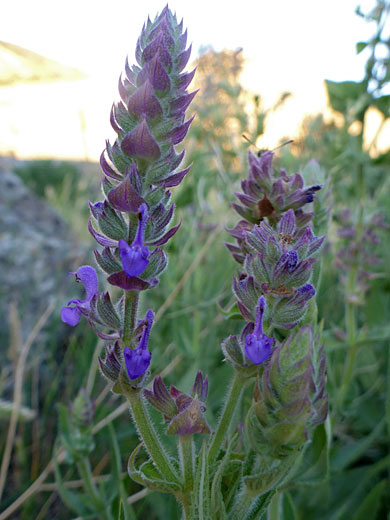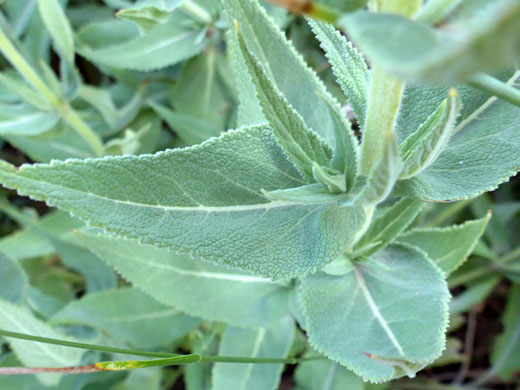Common name:
Woodland sage
Family:
Scientific name:
Salvia sylvestris
Synonym:
Salvia nemorosa
Main flower color:
Range:
The northern Rocky Mountains, and small areas of some other western states (non native)
Height:
Up to 30 inches
Habitat:
Grassland, riverbanks, roadsides, disturbed areas; up to 8,000 feet
Leaves:
Ovate to lanceolate, up to 4 inches long, with serrate margins
Season:
June to September
Salvia sylvestris , a Eurasian species, is in the US found in small, scattered locations in around 20 states; it is most widespread in Montana. The stout, light green stems have a covering of soft, spreading hairs, and they grow vertically upwards to a height of around 2 feet. Stems may branch a few times, above the middle. Leaves are greyish-green in color, crossed by a lighter midvein, and they have an irregular surface. Lower stem leaves are stalked; those above are sessile. Leaves are flattish at the base (truncate).
The inflorescence is a narrow, elongated cluster, each flower subtended by a leafy bract, green or purplish. Flowers have a green, glandular hairy calyx that extends to five purplish lobes, and a bluish-purple corolla with two lips. The upper lip is curved to form a hood, angled upwards, while the lower lip is divided into three lobes, each terminating in a sharp point. The middle lobe is the largest, and projects downwards. Stamens are not exserted, instead contained within the upper lip.
The inflorescence is a narrow, elongated cluster, each flower subtended by a leafy bract, green or purplish. Flowers have a green, glandular hairy calyx that extends to five purplish lobes, and a bluish-purple corolla with two lips. The upper lip is curved to form a hood, angled upwards, while the lower lip is divided into three lobes, each terminating in a sharp point. The middle lobe is the largest, and projects downwards. Stamens are not exserted, instead contained within the upper lip.
All Contents © Copyright The American Southwest | Comments and Questions | Contribute | Site Map



